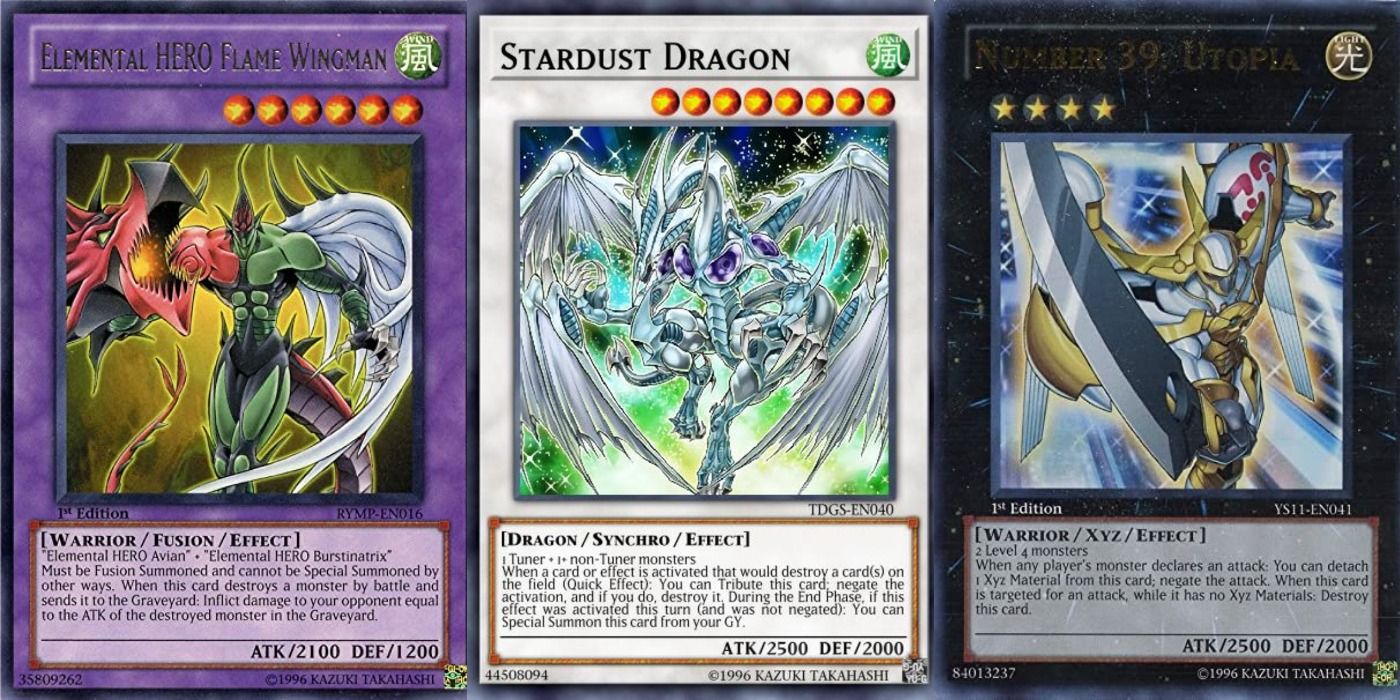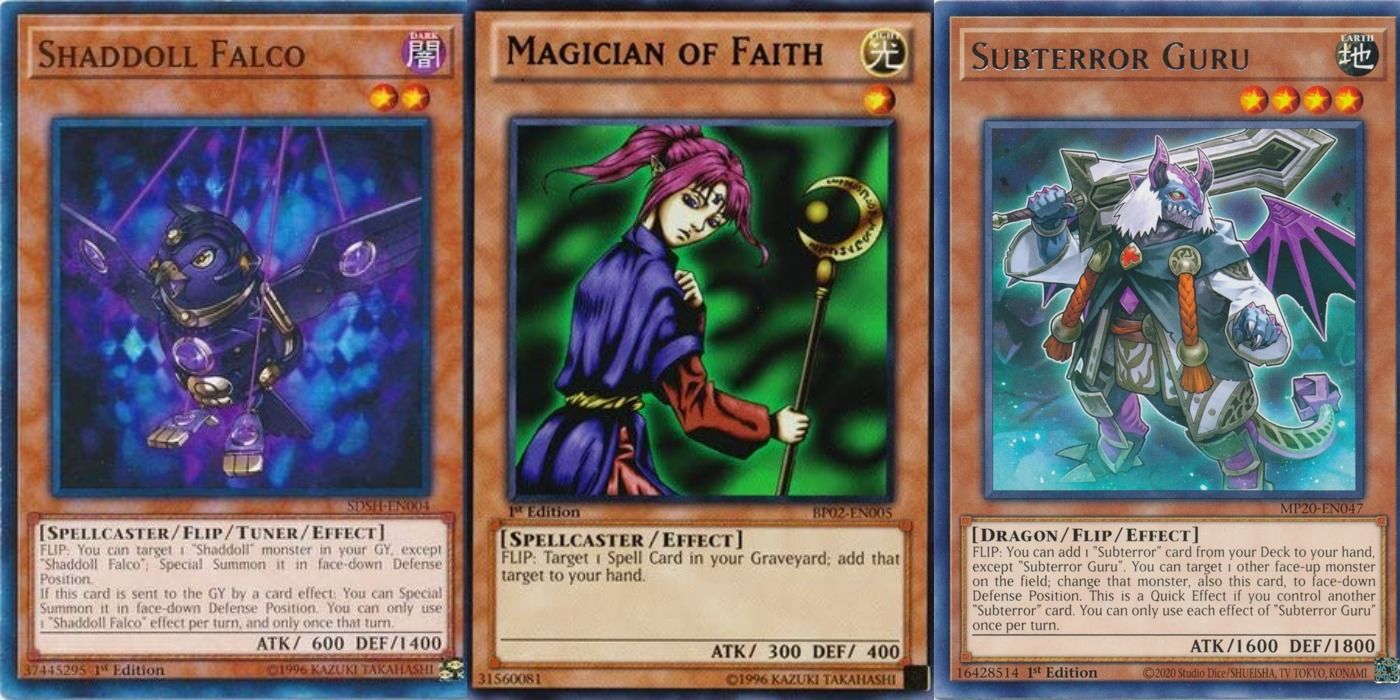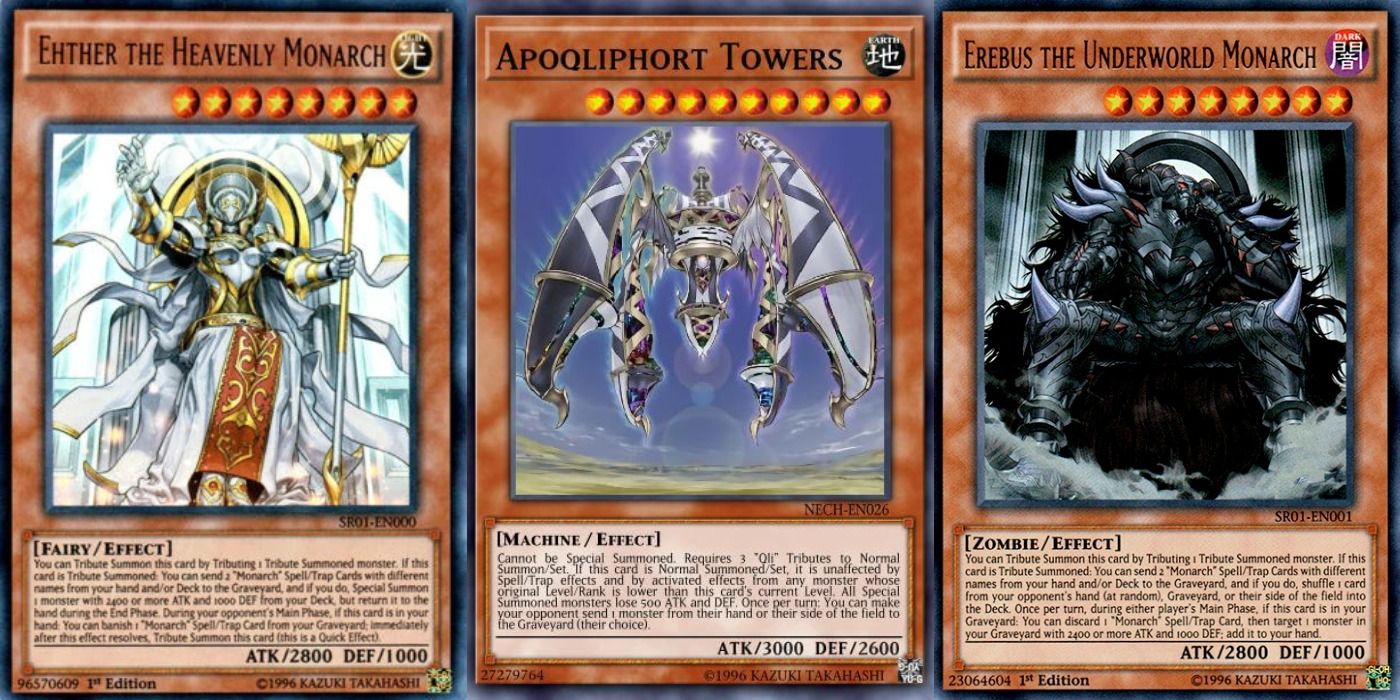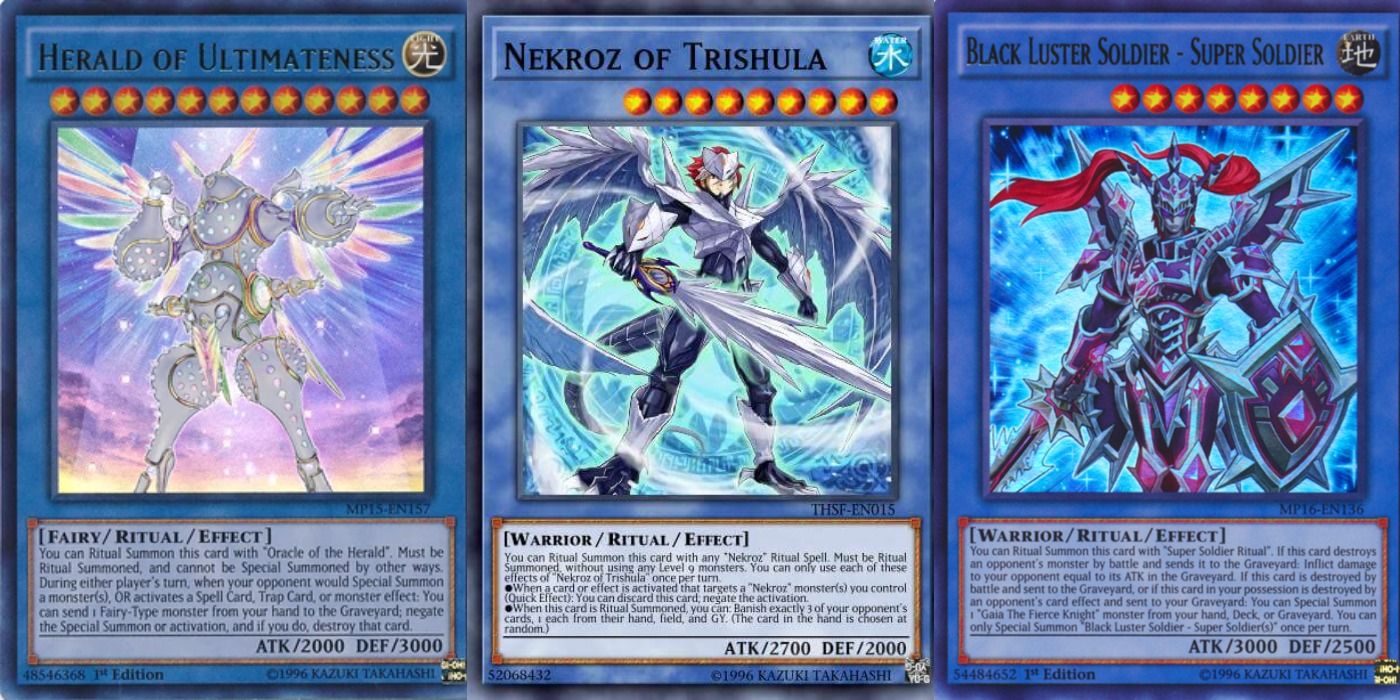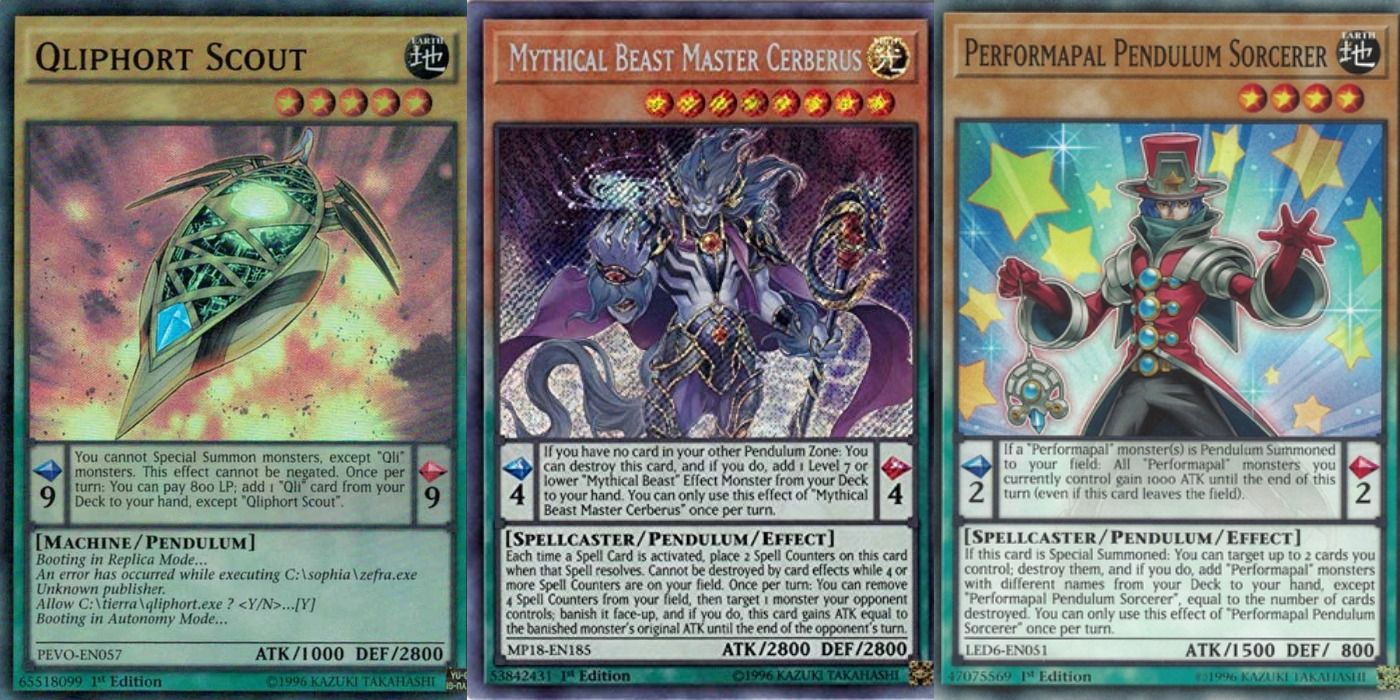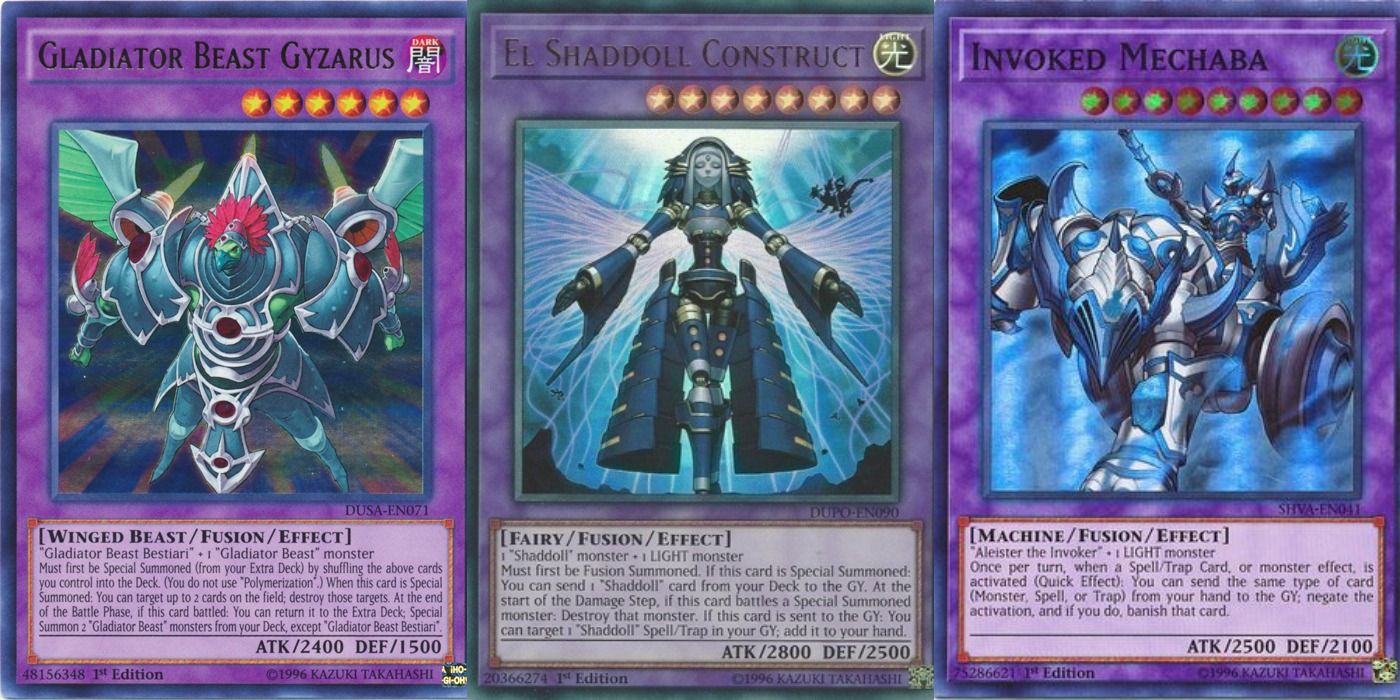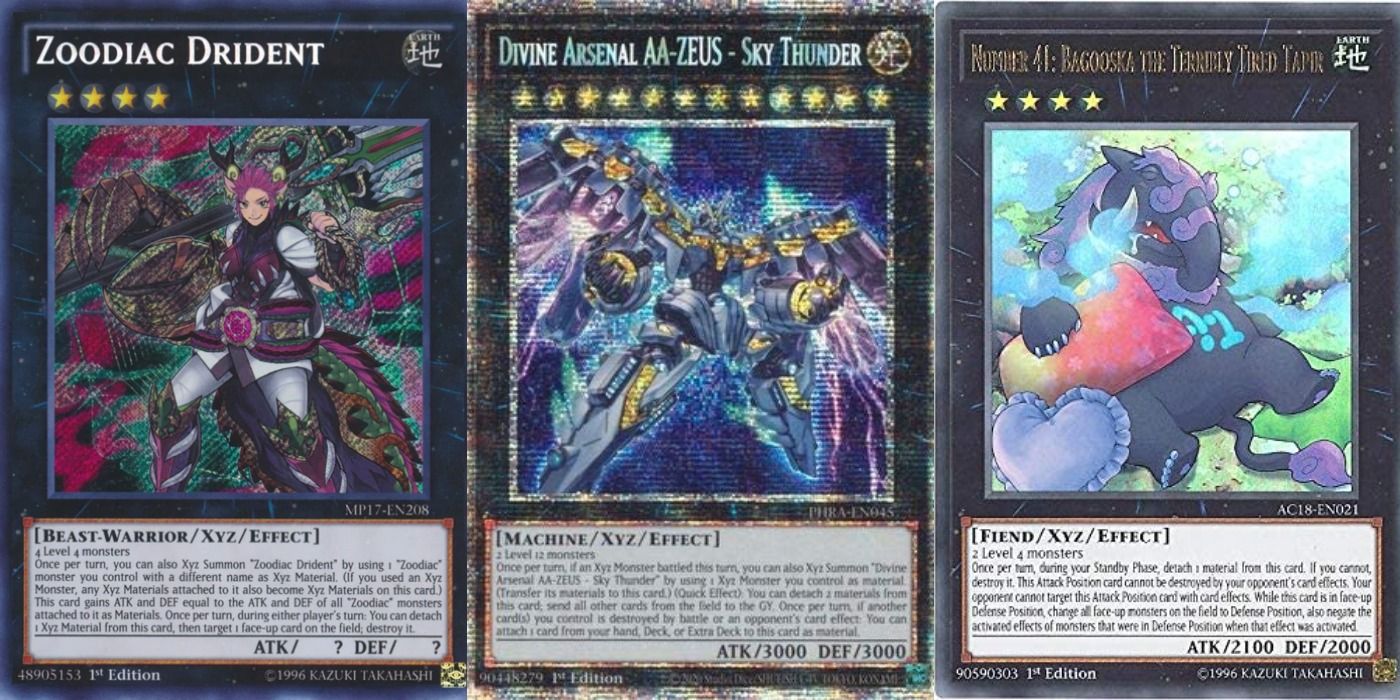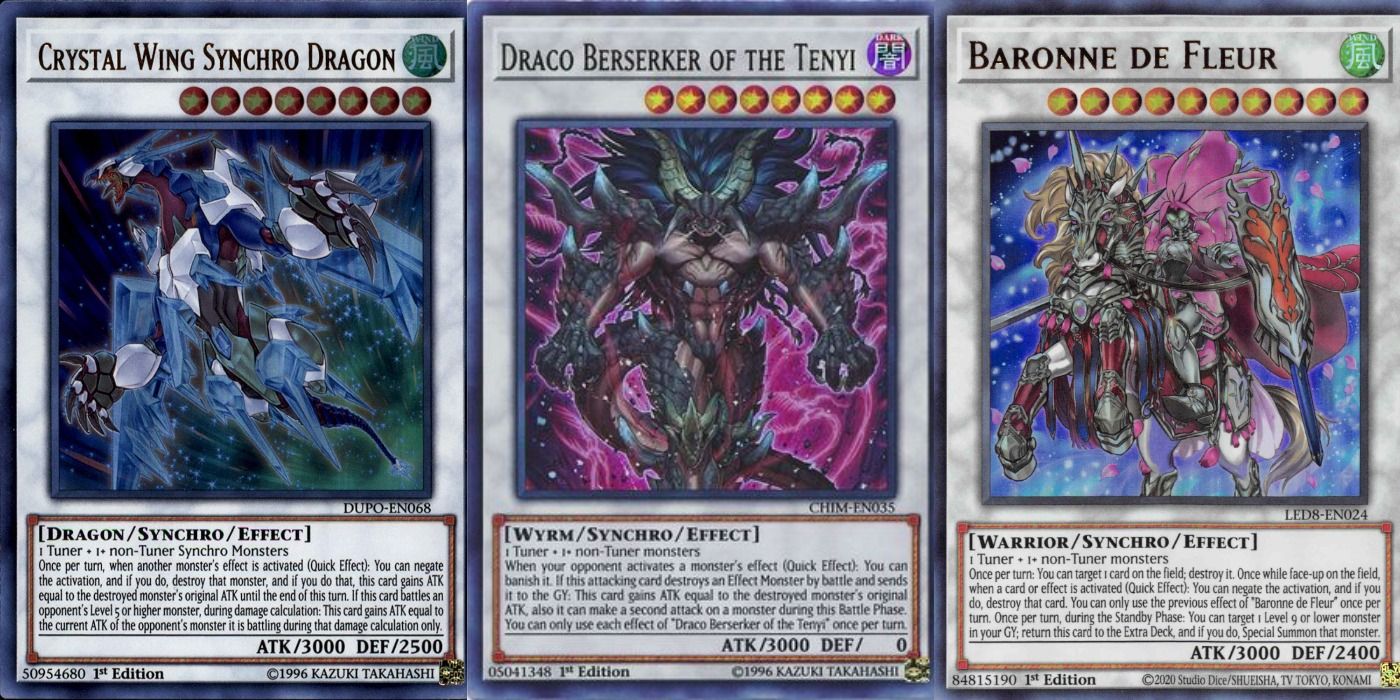Throughout the entirety of Yu-Gi-Oh!, a series spanning two decades, there have been 8 main alternative methods to special summoning monsters aside from the typical "normal summon" and "special summon." The original three methods were Flip, Tribute, and Fusion, with Ritual added shortly after. Starting with 5Ds, a new method has been added to that pantheon with each new series.
The franchise has done well to make sure each summon type gets love, and major tournaments have been won by decks specializing in all 8 types throughout the years. However, some types are stronger, and the most powerful decks often feature those themes over others.
Flip
Flip Summoning involves setting a monster in Face-Down Defense Position and flipping it Face-Up, either through an opponent's attack or manually during the player's next turn.
During early Yu-Gi-Oh! the competitive scene was run by powerful Flip effects like "Magician of Faith." However, Flip monsters haven't truly had their time in the spotlight since the 2000s. The most powerful Flip archetypes in recent years have been "Shaddoll" and "Subterror," but Flip effects are the least powerful part of the Shaddoll archetype, and Subterror's are mostly carried by their traps. Flip effects are simply too slow to be the driving force behind a modern deck.
Tribute
Tribute summoning involves releasing one or two monsters as a cost for the normal summon of a high-level monster.
Typically, Tribute Summoning is a weaker alternative to just special summoning powerful monsters via a card effect or game mechanics. However, decks like "Monarchs" get such incredible advantage off the tribute that the method is worth it for those decks. There are also individual monsters like "Vanity's Fiend" that are at a power level high enough to justify the cost of losing the player's Normal Summon. The biggest downside of Tributing is the loss of the Normal Summon, which is usually reserved for incredibly powerful Level 3 or 4 monsters that can start combos by themselves.
Ritual
Ritual Summoning involves the use of a ritual spell to special summon a specific monster from the player's hand. The cost is usually to tribute monsters that are equal to or higher level than the ritual monster, but the specifics of that mechanic can be changed depending on the type of ritual spell.
Ritual is at first look the weakest summon type. Acquiring a specific ritual spell, a specific ritual monster, and then sacrificing resources to summon the monster is just too much of a loss in card advantage and consistency. Until Arc-V, Rituals were just known for iconic anime cards like "Black Luster Soldier" However, it's the support for the mechanic that elevates it to a competitive level. "Nekroz" was a ritual archetype that completely dominated the game, and the modern deck "Drytron" uses over four archetypes worth of ritual support to create a terrifying deck.
Pendulum
Pendulum Summoning involves setting two "pendulum scales" using pendulum monsters, a type of monster that can act as a continuous spell in the Pendulum Zone or as a regular monster.
Pendulum monsters were initially the most powerful type in the game by far, but their unique game mechanic of being sent to the extra deck instead of the graveyard was nerfed when Vrains made pendulum monsters too reliant on Link Summons to function properly. Unlike the three strongest core summon mechanics, Pendulum monsters are just too reliant on other summon types to get them going. However, Pendulums have still had competitive builds since the nerfs to their mechanic and remain potentially dangerous given the right support.
Fusion
Fusion Summoning uses a fusion spell, originally just "Polymerization," to create fusion monsters by combining specific fusion material monsters.
Originally, fusion summons were never conducted properly. The only good fusion monsters were those that could be summoned by alternative means like "Metamorphosis" or "Instant Fusion." GX did its best to introduce fusions to the metagame with Contact Fusion, a method used by the competitive deck "Gladiator Beast." It wasn't until Arc-V that a deck worthy of national competition would Fusion Summon using an actual fusion spell: the fan-favorite archetype "Shaddolls." This Flip/Fusion deck took the least-loved summon methods at the time and turned them into the best deck in the metagame. Currently, "Predaplant Verte Anaconda" and "Destiny HERO - Destroyer Phoenix Enforcer" are powerhouses in the metagame, and players will run into Fusions in most tournaments.
Xyz
Xyz summoning was introduced in Zexal as the first alternative to the dominant Synchro summon method. Xyz summons are performed by overlaying two monsters of the same level to summon a monster of the corresponding rank from the extra deck.
Xyz summons became a hit fairly quickly, and the metagame was dominated by Xyz with a small splash of Synchro. Since their release, Xyz has almost been featured in some capacity in most decks due to the ease of the summon method. The competitive deck that has abused the mechanic the most for years is "Zoodiac," who were the strongest deck in the game at one point and are now splashed into the "Tri-Brigade" deck to summon the most powerful Xyz monster in the metagame: "Divine Arsenal AA-Zeus - Sky Thunder."
Synchro
After Duel Monsters and GX went by, a new summoning mechanic was finally released with 5DS. Synchro Summoning uses a special type of monster known as "Tuners." A Synchro can be summoned by using a Tuner and non-Tuner whose levels add up to the level of that Synchro Monster.
Due to the nature of the summoning mechanic, Synchros are often only as good as the Tuners that can summon them. If there are powerful tuners in the game, Synchros will often also be strong. Fortunately for the mechanic, many of the most powerful low-level monsters in the history of the game have been Tuners. Fan-favorite anime character Aki's "Glow-Up Bulb" is currently Forbidden, along with plenty of other Tuners that were too powerful. Currently, the Synchro-focused "Swordsoul" archetype and the versatile "D/D' archetypes are powerhouses that have topped competitive events with Synchros like "Baronne de Fleur" and "Crystal Wing Synchro Dragon."
Link
Part of what kept Synchro and Xyz in check was the specificity of the summoning conditions. Monsters of the same level or the requirement of Tuners weren't crippling conditions, but it demanded some level of restriction in deck building. However, with Vrains came Link Summoning, a method that can use any combination of any monsters to summon a monster whose link rating equals the number of monsters used.
Links have dominated since the day they came into the metagame, and other summon methods often lean on Links to get by. Pendulums needed "Heavymetalfoes Electrumite" before it was Forbidden, Fusions thrive thanks to "Predeplant Verte Anacdona," and Synchros dominate with the help of "Crystron Halqifibrax." Links aren't just the facilitators of decks, they also include many of the game's strongest boss monsters. Arguably the most powerful ace monster in the game's history, "Topological Gumblar Dragon" was a link 4 that let the player discard the opponent's hand and deal 3000 damage to them.

